Hosoda in Wonderland
May 14, 2016 · 0 comments
By Andrew Osmond.
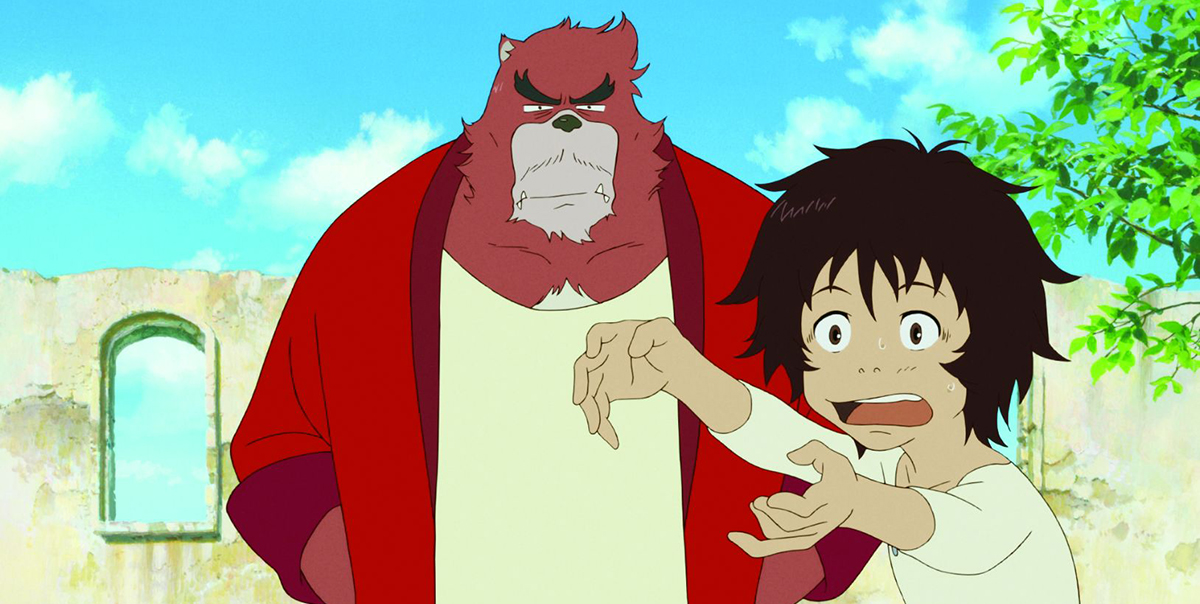 “When I have an idea in my mind,” says Mamoru Hosoda, “I can’t help thinking about how I can express it, how can I make it wonderful, to make people laugh… I get this urge to actualise my ideas. It’s the sheer pleasure of making it happen that drives me through the making of the film.”
“When I have an idea in my mind,” says Mamoru Hosoda, “I can’t help thinking about how I can express it, how can I make it wonderful, to make people laugh… I get this urge to actualise my ideas. It’s the sheer pleasure of making it happen that drives me through the making of the film.”
It’s a process he must be used to. Last year’s Hosoda film, The Boy and the Beast, was his fourth as far as most viewers are concerned, joining The Wolf Children, Summer Wars and Hosoda’s 2006 calling-card, The Girl Who Leapt Through Time. In a reminder of this heritage, the logo for Hosoda’s Studio Chizu at the start of Boy and the Beast incorporates the silhouette of the time-leap girl Makoto. Pedants will remind us that Hosoda had previously directed shorter films in the Digimon and One Piece universes, going back to 1999.
What happens when Hosoda gets stuck on a film? “I fall asleep,” is his shocking answer. “I drink alcohol in the middle of the day and sleep right away and reset myself. Somehow miraculously my mind works itself out and solves the problems, and sometimes it doesn’t; but for me, sleeping is the most effective way. When I get up, after two hours, I get stuck and I fall asleep again.”
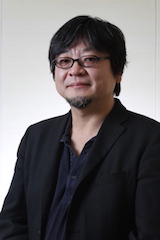 It’s an answer to warm the cockles of dozy schoolkids and NEETs who love his films, though it would probably scandalise the anime industry. (Sleep? For an anime director?) What about the Japanese TV documentary which claimed Hosoda barely ate or slept for six months during the production of Boy and the Beast? The director cheerfully rubbishes the report – “I was eating well and sleeping fine.”
It’s an answer to warm the cockles of dozy schoolkids and NEETs who love his films, though it would probably scandalise the anime industry. (Sleep? For an anime director?) What about the Japanese TV documentary which claimed Hosoda barely ate or slept for six months during the production of Boy and the Beast? The director cheerfully rubbishes the report – “I was eating well and sleeping fine.”
Whatever Hosoda’s doing, it seems to work. The Boy and the Beast is his most successful cinema release to date, taking close to $50 million in Japan. It suggests that either Mamoru Hosoda has become an established commercial brand, or else that Japanese people have come round to accepting his films as the successor to the (apparently) expiring Studio Ghibli.
The Boy and the Beast is the story of an angry little-boy runaway who escapes the neon of Tokyo, via a series of mysterious alleyways a la C.S. Lewis, into a world of fabulous talking beasts. Here he becomes the truculent apprentice of Kumatetsu, an unkempt bear-man who dreams of being top fighter in his world, though his fellow beasts write him off as a pathetic no-hoper. Like Wolf Children, the story unfolds over many years as the boy grows to manhood and Kumatetsu grows to… Well, see the film.
Like Wolf Children, Boy and the Beast offers a fantasy slant on the trials of parenthood. This time, though, we see the situation turned on its head; the slobby Kumatetsu is just as much a trial for the boy he takes in. “(The film) actually started when we welcomed a baby boy recently,” Hosoda said. Ko Hosoda came into the world soon after his dad finished Wolf Children. “I’m just thinking as a parent, how is he going to grow up, how are we going to raise him? How is he going to relate to the world? Is he going to be able to find a soulmate or some ‘master’ from whom he can learn about life?”
Family themes run through Hosoda’s films. The Girl Who Leapt Through Time highlighted teenage Makoto’s rapport with her aunt, while Summer Wars was all about in-laws. Boy and the Beast, though, is Hosoda’s second film in a row to foreground parent-child relationships, following Wolf Children.
“The story about a parent and child is such a banal theme; I used to think that I couldn’t make a movie out of it, because it was just too ordinary,” reflects Hosoda. “But now, in our modern times, I feel this is really the time to re-evaluate what family means, and what it means to the child. Especially as the child might grow up thinking that the ‘family’ was a certain way… As they grow up, the time comes when children start asking themselves about family and values. There is a gap between those two trains of thought, so I wanted to reflect on that through the film.”
Although most of the story is told through the boy’s eyes (much as, say, Spirited Away was told from Chihiro’s POV), Hosoda says Kumatetsu is the film’s real protagonist. “He’s basically struggling with many issues; being a parent, being an upstanding person… He faces the same question as any parent; what can he do for the child?” For starters, he can give him a name. Kumatetsu dubs the boy ‘Kyuta,’ a humorous reference to his age at the start of the film, because ‘kyu’ means nine in Japanese. Hosoda acknowledges the scene homages a samurai classic, Akira Kurosawa’s Sanjuro (1962), where Toshiro Mifune’s ronin named himself in similarly casual fashion.
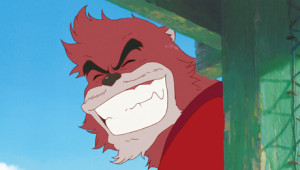 Kumatetsu isn’t the only character with issues; Kyuta has plenty too, leading to drastic developments in the film’s second half. He also gains a surrogate mother of sorts, a girl called Kaede (voiced by Suzu Hirose, who took the title role in this year’s acclaimed live-action Our Little Sister, directed by Hirokazu Kore-eda). At one point, Kaede tells Kyuta that there’s darkness is everyone; the line feels like a direct message to the audience, and particularly to youngsters harbouring dark feelings.
Kumatetsu isn’t the only character with issues; Kyuta has plenty too, leading to drastic developments in the film’s second half. He also gains a surrogate mother of sorts, a girl called Kaede (voiced by Suzu Hirose, who took the title role in this year’s acclaimed live-action Our Little Sister, directed by Hirokazu Kore-eda). At one point, Kaede tells Kyuta that there’s darkness is everyone; the line feels like a direct message to the audience, and particularly to youngsters harbouring dark feelings.
“Yes, it’s absolutely one of the messages I wanted to deliver,” Hosoda says. “If you look at the film’s title, we wanted to throw out questions, about how what we consider looks like a ‘monster’ may not actually be what we think it is – what does that mean to us and what does that means to children?” (In Japanese, the film’s called Bakemono no Ko, or “The Beast’s Child,” though the English title Boy and the Beast can be interpreted more than one way when you watch the film.)
Hosoda’s films have always had strong fantasy elements: the liquid fourth dimension of The Girl who Leapt Through Time, Summer Wars’ cyber-Oz, the pantheistic mountain slopes of Wolf Children. In Boy and the Beast, most of the story takes place in a magic, fantasy otherworld named Jutengai. No more peeps through the looking-glass for Hosoda; now he’s giving us a full-on Wonderland.
“It’s just more fun to explore a fantasy world,” says the director. “If you’re doing a drama, you have to make it realistic enough so that the story actually makes sense, but if you’re dealing with fantasy, it’s all about the depth of expression; it can be mysterious, and even questionable, but just being fantastical evokes imagination. I think that’s what film needs in general. On TV, maybe it’s enough that the story makes sense, but I believe we have to do more for film. I always think about how to leap forward and just forget about reality; how to move into this world of fantasy.”
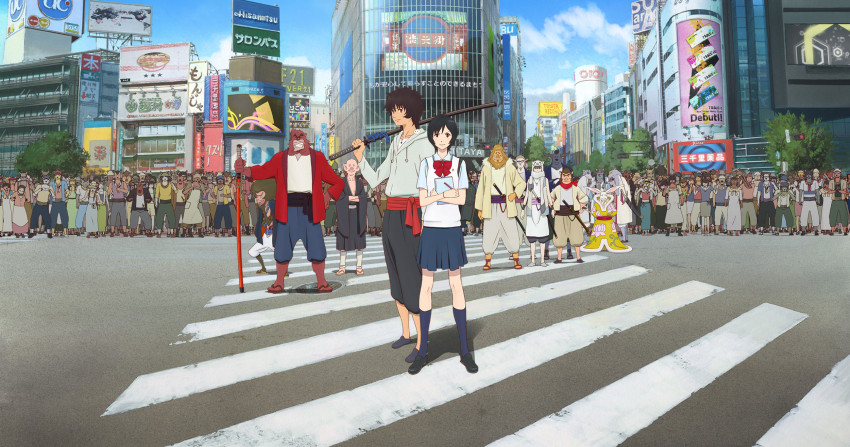 And yet, the film isn’t all in Jutengai. Many real-world scenes take place in a very familiar setting for Japanese viewers; the central Tokyo district of Shibuya and specifically the area round the huge pedestrian crossing known as the “scramble junction.” (You can see it live here.) It’s like setting a British fantasy film at Trafalgar Square, or a French one at the Arc de Triomphe. It’s a quintessentially urban reference in a genre we associate with country settings, thanks to Ghibli and films like Wolf Children. So why the city lights?
And yet, the film isn’t all in Jutengai. Many real-world scenes take place in a very familiar setting for Japanese viewers; the central Tokyo district of Shibuya and specifically the area round the huge pedestrian crossing known as the “scramble junction.” (You can see it live here.) It’s like setting a British fantasy film at Trafalgar Square, or a French one at the Arc de Triomphe. It’s a quintessentially urban reference in a genre we associate with country settings, thanks to Ghibli and films like Wolf Children. So why the city lights?
“I felt very much like Shibuya has an alternative universe,” says Hosoda. (Most foreign visitors would agree.) “The way the roads are built is sort of un-human… If you think about the 1980s, back at the height of development when Shibuya was being built, we all got the sense that Shibuya has many slopes and almost a pan-European feeling with names like ‘Spanish slope.’ I feel like this was a perfect location to set up this alternative universe.” It also let Hosoda slide in looking-glass jokes. “In Jutenagi, you see a lot of white and yellow and blue; we were actually making a reference to Parco (a department store in the Shibuya district).”
It’s hard to imagine Ghibli fessing up to such a brand-based gag, but then Boy and the Beast is a worldly production. In the build-up to the film’s release, Kumatestsu and Kyuta appeared in TV ads promoting green tea, while an exhibition of Hosoda’s work ran in Shibuya last summer, minutes from the scramble junction displayed prominently in the film. Boy and the Beast doesn’t begrudge the PR machine; it embraces it. Maybe a future Hosoda film will show undercover yokai working in studio marketing departments, a Japanese Monsters Inc. After all, it’s commerce in a good cause, to bring Hosoda’s urges and ideas to actuality.
Andrew Osmond is the author of 100 Animated Feature Films. The Boy and the Beast is released in UK cinemas on 10th July 2017.
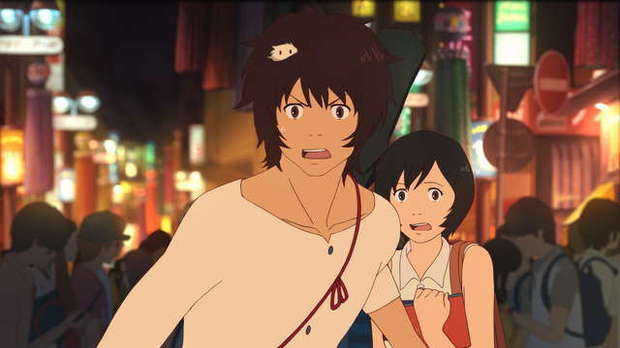
Leave a Reply